
Phangan National Park
Since 2019 much of the Thai Gulf has been designated as an Environmental Protection Area, and as such has restrictions on the activities and changes that are allowed there.
Koh Phangan is almost unique in the Gulf Islands in that it has preserved nearly 40% of its area in a relatively unchanged form over many years due to its adoption as a National Park, incorporating mountain areas, jungle and which also includes a Marine Reserve coastal area.
The origins of the National Park offer an inspiring and uplifting story of a local resident, Por Taan Lop, who played a critical role in the formation on the park areas and which helps to make Koh Phangan such a unique destination and place to live today, and one of the cornerstones of its ecotourism potential.

A Visionary Monk – and the formation of the Than Sadet-Ko Phangan National Park
In 1949 a young Phangan man sat beside a pool looking at the surrounding landscape at Tham Nam Rak, Koh Phangan, seeing the beauty of the forest and its rich and complex mix of flora and fauna. Elsewhere on the island, he knew, the forest was slowly but surely being cut and destroyed in a ‘slash and burn’ agricultural mindset, increasing development, and increasing quantities of discarded trash, a far cry from the pristine state of his youth. In that moment Lop Bunya dreamed of a ‘forest park’ for the surrounding area in order to conserve the natural beauty and wildlife for the people of the island.
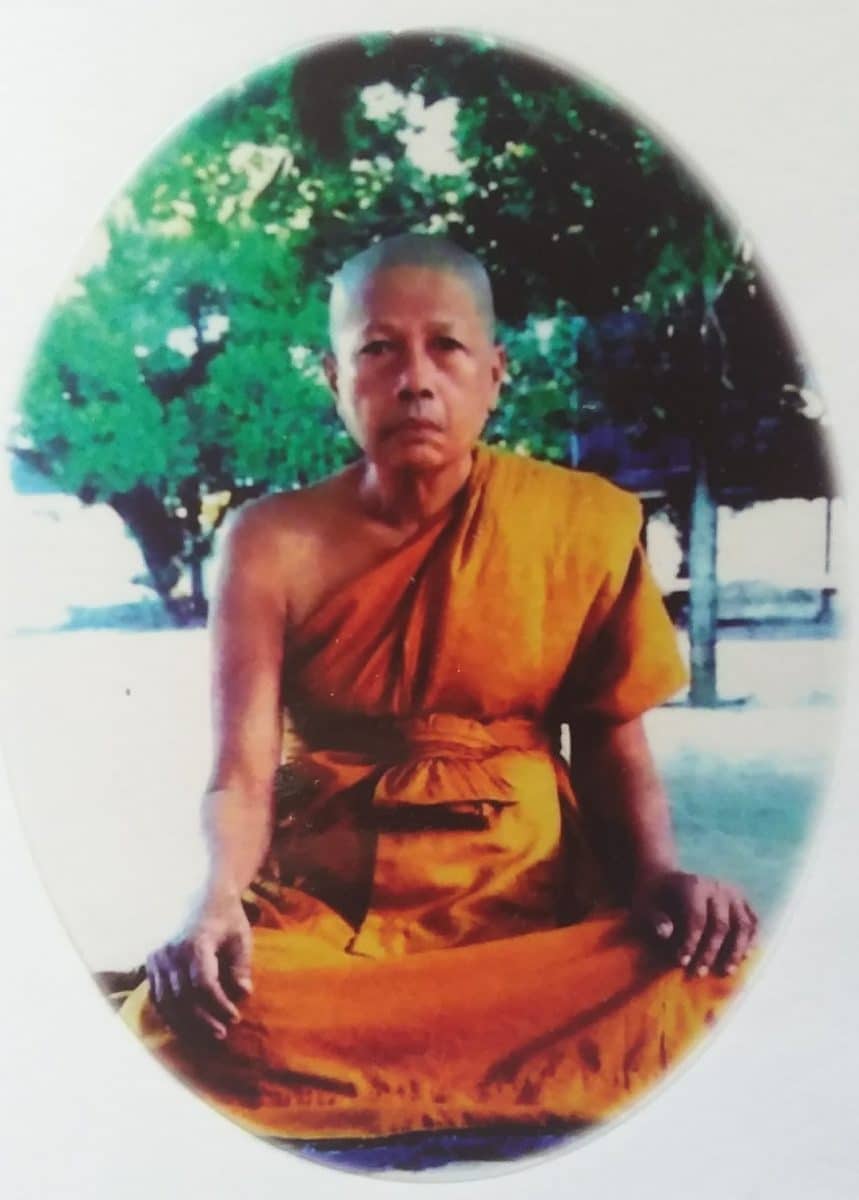
Fast forward to 1967, Por Taan Lop, (buddhist monk names after becoming a monk in 1952, Por Taan Lop, maha withun thamawaro, phrakhru suphatthamaphirom) now a monk at Wat Rasadara Charoen (Wat Ratcharoen) on the island, again was sitting by the same pool, with the same thoughts. The destruction of the native forests and development meantime had continued, even the national reserved areas designated by King Rama V around Than Sadet had shrunk and been overly cleared, used for agriculture and tin extraction. Of all the areas on the island Por Taan Lop deemed the area around Nam Tok Phaeng to be the most pristine and decided that a Forest Park would be an appropriate designation – allowing planned management and improvement but retaining its natural state.
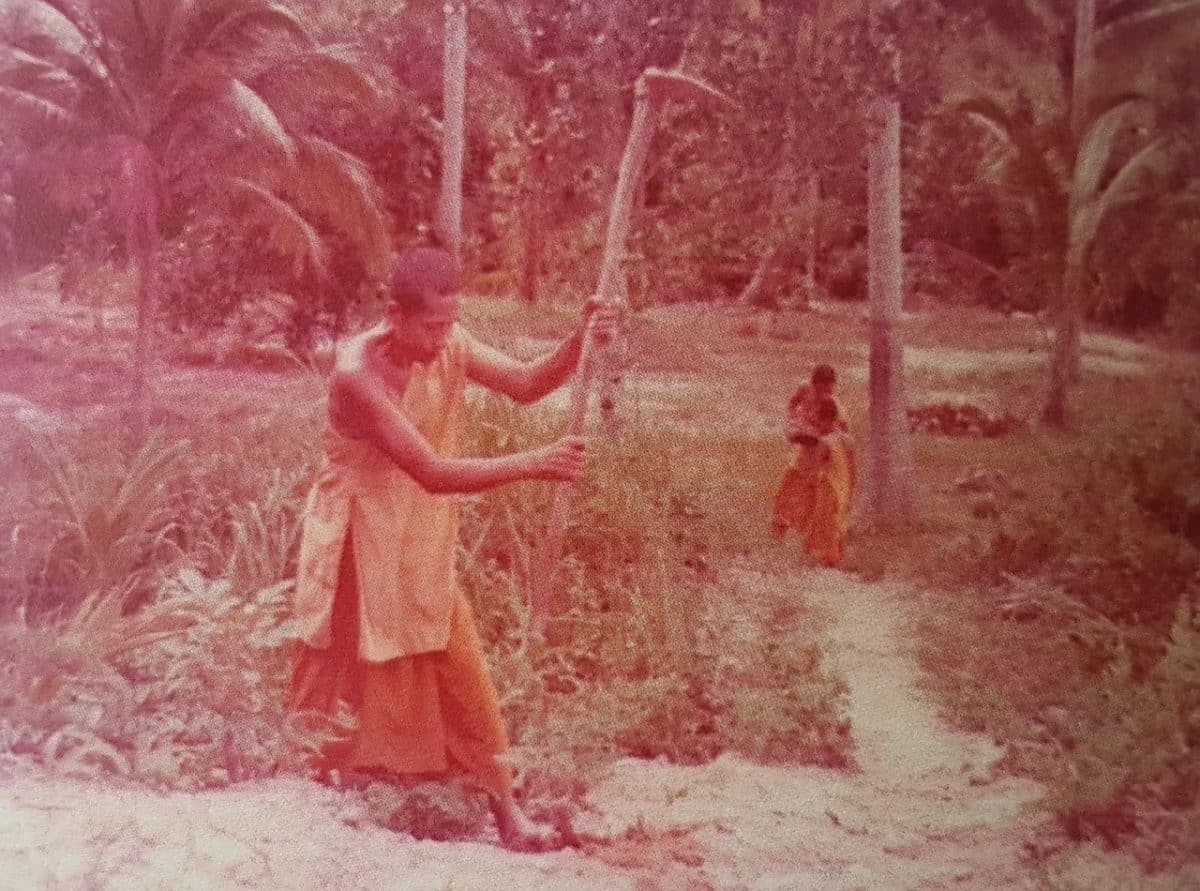
In April 1968 he undertook the surveying of the area around Nam Tok Phaeng, accurately measuring heights, angles, water courses and boundaries, the basis of which provided an accurate ‘baseline’ for all subsequent planning to establish the Nam Tok Phaeng Forest Park.
In May 1972 the first significant work was started, the construction of a dirt roadway to replace the existing foot trail from the main Chaloklum road to close to the base of Phaeng Noi waterfall.
Monks, novices and villagers combined their efforts to clear the route, dig up tree stumps and grade the land as necessary, a total of about 1 km.
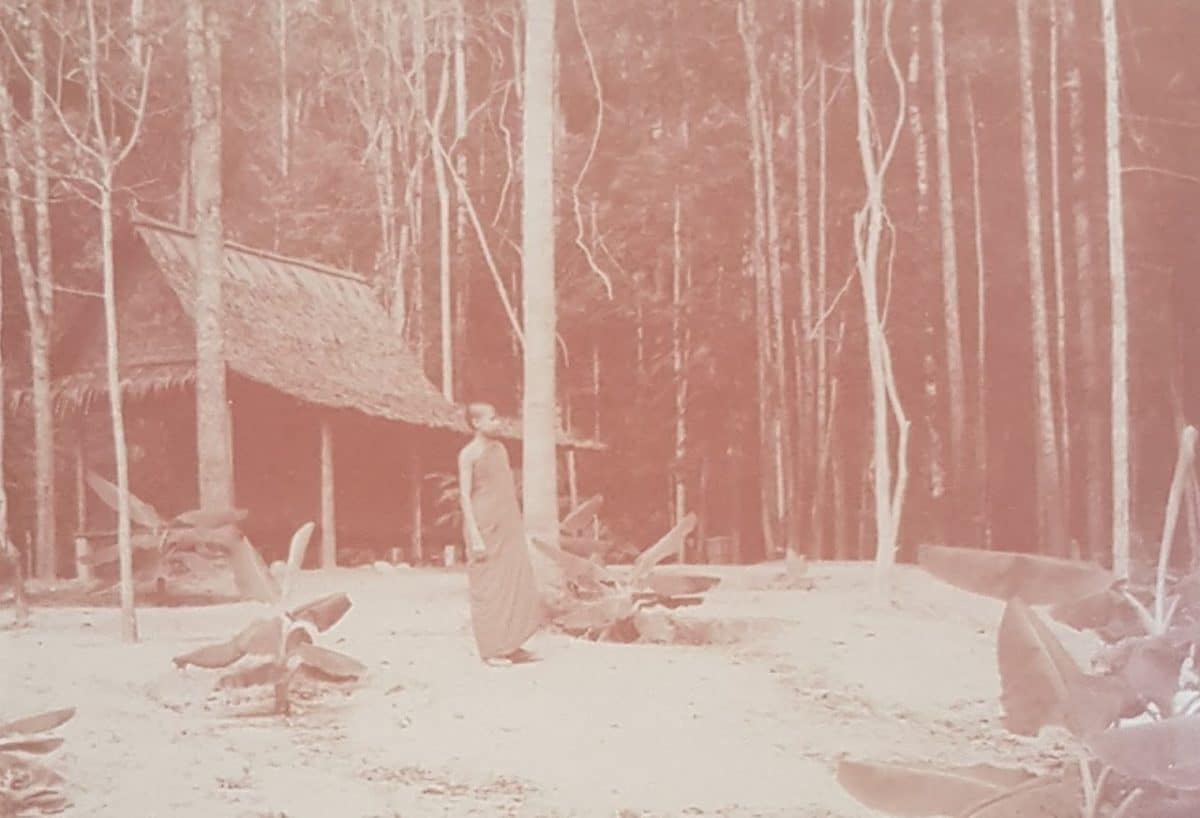
‘The workers saw the results of their labor. Some of the work was correct, some was not. There was both happiness and unhappiness. Then it all became part of the past. Those who know the value of the present moment must work swiftly to achieve something meaningful. Use the present to build a path to a better future’ (Por Taan Lop).
The roadway, allowing access, was completed during September 1972, the route being followed to a large degree by the modern concrete road seen today.
‘And so the work was completed through cooperation, dedication and diligence’ (Por Taan Lop).

Now that the road allowed access to 4 wheel drive vehicles further phases could be started, next being construction of a wooden sala, carried out by local craftsmen and villagers, at no charge, and by end May 1973.
‘If most people knew the value to society of a public heritage, they would be willing to help build, decorate, preserve and maintain that heritage to help it last as long as possible to be of value to future generations’ (Por Taan Lop)
Following the sala, a small wooden guesthouse for visitors was completed near to a stream and in the shade of surrounding trees, so blending into the natural environment.

In 1975 a weir was constructed on the river in order to conserve water from the rainy to the dry season. During digging and construction tin ore was able to be sold at local markets to finance the purchase of necessary construction materials. On completion and filling of the pool the local villagers, and particularly local children, came to play and bathe in the ever present water.
The rainy season that year was poor, the local rivers ran dry, but not the pool with its retaining weir. Sadly this led to unfounded complaints that the weir was stealing water from the normal river flow and led to considerable concern in local villages, to the degree that the weir gates were opened secretively on several occasions and allowing the pool to drain. The seeds of future disaffection had been sown.
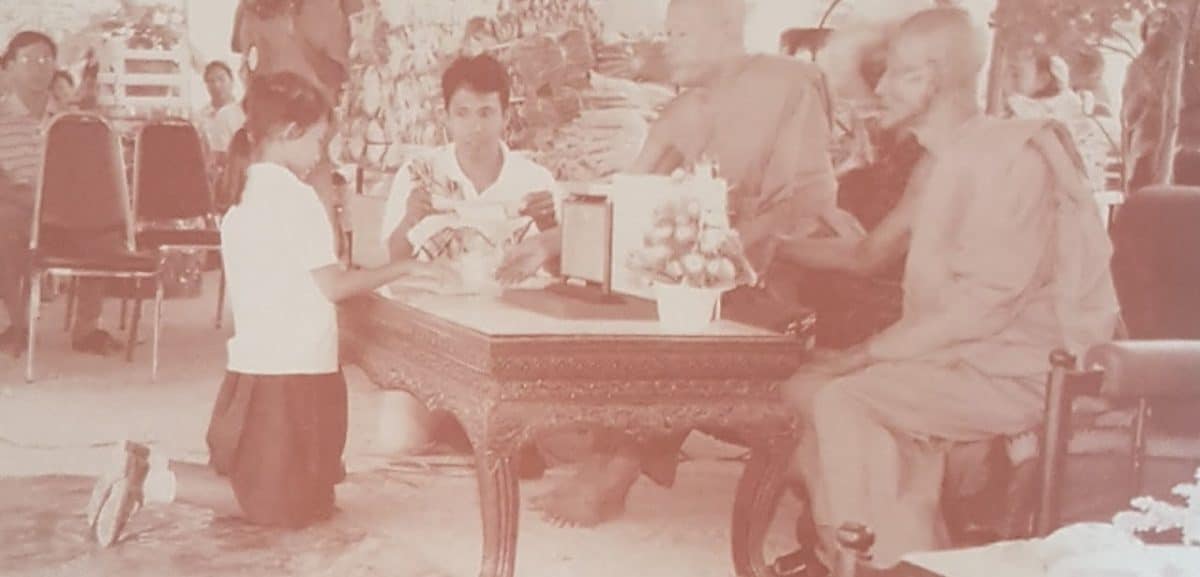
Later that year Por Taan Lop visited the nearby mountain Khao Mai Ngam, meaning ‘beautiful forest’, the source of many of the areas streams. He was appalled to discover the large scale destruction and felling of trees for lumber and a number of charcoal pits. Conservation of the forest areas was the responsibility of government officials and should not be the concern of an individual, but here was a clear flaunting of the rules, with no apparent official action, what to do?

Our budding ‘eco warrior’and conservationist, after much deliberation, wrote to the land clearance and charcoal burners asking for the forest to be left untouched. Soon thereafter, a novice monk went, as usual, to collect alms from the villagers, food for the monk and novice to eat that day, but returned with an empty alms bowl, the local people saying there was no charcoal to cook rice or wood to cook their curry.
‘Even though the villagers no longer respect us and don’t provide offerings when we go to receive alms, we should be content. When we make a stand on something we must be willing to make some sacrifices; when we take a position others don’t yet understand, we must be willing to accept the consequences. Our actions will benefit the common good and will benefit their children, grandchildren and great grandchildren.
I had to accept being laughed at by relatives, friends and some of my pupils in order to maintain the forest so it could continue to be part of Ko Pha-ngan. I had the strong dedication of someone who had no official authority only the responsibility which comes with being a member of the human race’. (Por Taan Lop)

During October 1977 Por Taan Lop was visited by a government national parks official, who inspected the area with the monk and marvelled at the straight tall forest trees, some measuring in excess of 6m in trunk diameter. So impressed was the official he agreed to the establishment of the Nam Tok Forest Park with immediate effect and authorised the hire of nine workers to help maintain the Park. Work to improve the area continued throughout 1977 and 1978 at which time the National Parks Division appointed an official superintendent of the Nam Tok Forest Park and so allowing Por Taan Lop to return to his duties as a monk, and to enjoy his enduring legacy of the Forest in peace.
‘I only hope my dream forest park, a natural heritage, a public treasure and the pride of the people of Ko Pha-ngan, will continue to be looked after and maintained as a thing of enduring value for mankind’. (Por Taan Lop)
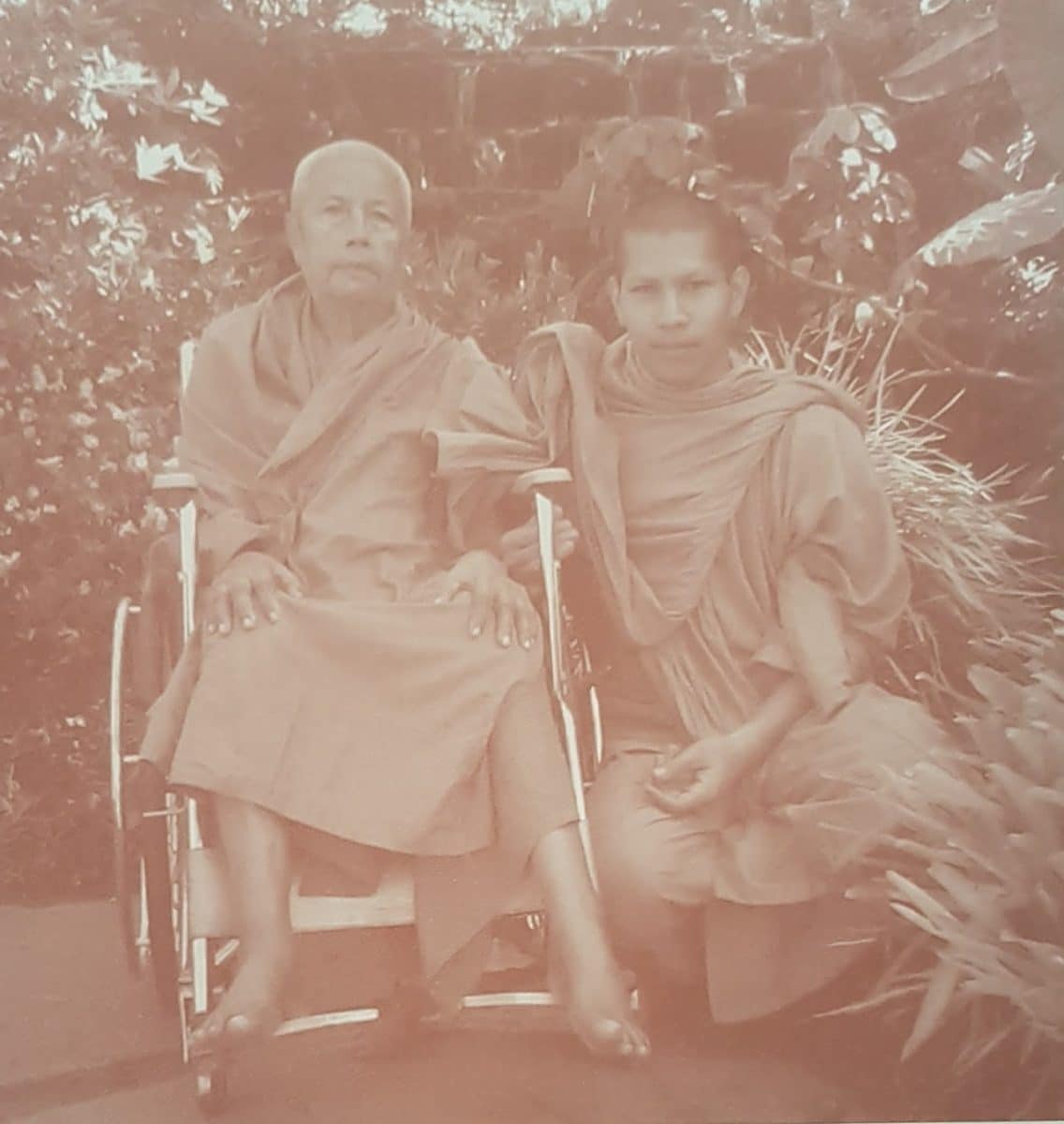
Por Taan Lop laid the foundations for the saving of key forest areas of what would become, in time, the Than Sadet-Ko Phangan National Park. Major milestones had been achieved, battles won, but the difficulties not yet over.
Over the subsequent 40 years continued debate and negotiation with landowners slowly defined the precise boundaries of the fledgling National Park, including both the Phaeng and Than Sadet areas, a complex and slow process due to the many vested and contradictory interests of the parties involved. In 2018 the final official announcement of the formation of the Than Sadet-Ko Phangan National Park was made, printed in the Kings Gazette and at last formally ratified.
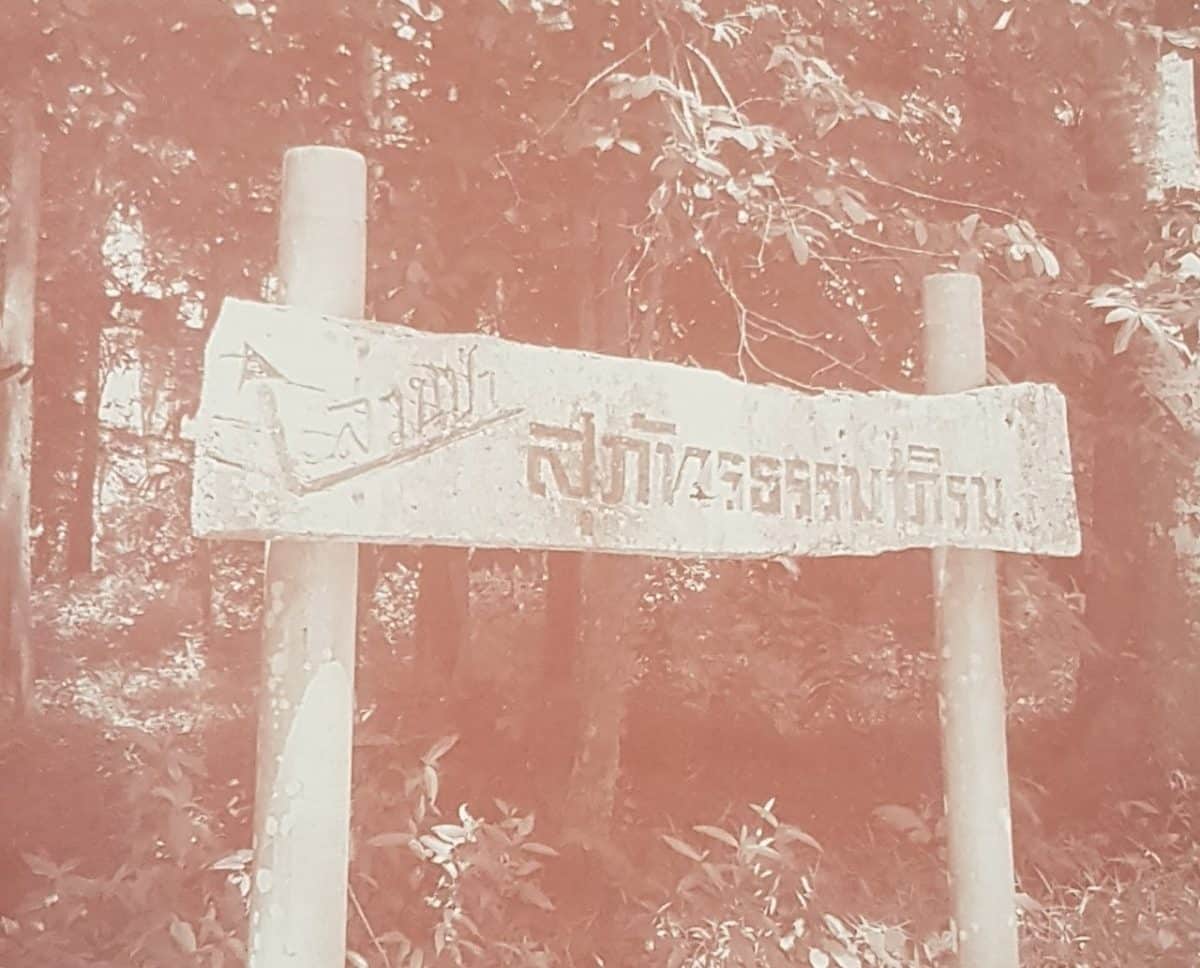
The Park in its final form has retained some of the wilderness of the island on its rugged and steep mountain ranges, forests, rivers, waterfalls and coastal areas. Nearly 40% of Ko Phangan is designated National Park … unique in the Gulf Islands, and should be maintained and respected as both a local and national treasure, the beating heart of the island, a key aspect of the islands life, and an attraction for local communities and an increasing number of visitors and developing ecotourism. The ideals and thinking of Por Taan Lop are as relevant, or more so, today as they were when he first sat by Tham Nam Rak over 70 years ago. Environmental protections now apply throughout the National Park, and the Thai Gulf itself has been designated as an Environmental Protection Zone, steps taken to help protect our natural island biosphere. Each and every one of us on Ko Phangan should have an equal ‘responsibility which comes with being a member of the human race’ to help to support those ideals, thinking and actions.

The vision of Por Taan Lop is maintained and continues in The National Park Rangers, EcoThailand, and many others, trying to balance conservation and sustainable development against commercial over exploitation, greed, over development and habitat destruction. Today Por Taan Lop is, at last, recognized and respected by Thai and foreign residents alike as a truly visionary thinker, with the diversity, beauty and future of Koh Phangan close to his heart.
Summarized, abstracted and updated by EcoThailand from:
‘Chronicles of the Nam Tok Forest Park’.
Phrakhru Suphatthamaphirom (Maha Withun Thamawaro)(Por Taan Lop)
Thai and English language private print runs, undertaken by the family of Por Taan Lop.
Our thanks to family members for providing copies of the books, additional photographs and written materials, and for their thoughts and recollections.
